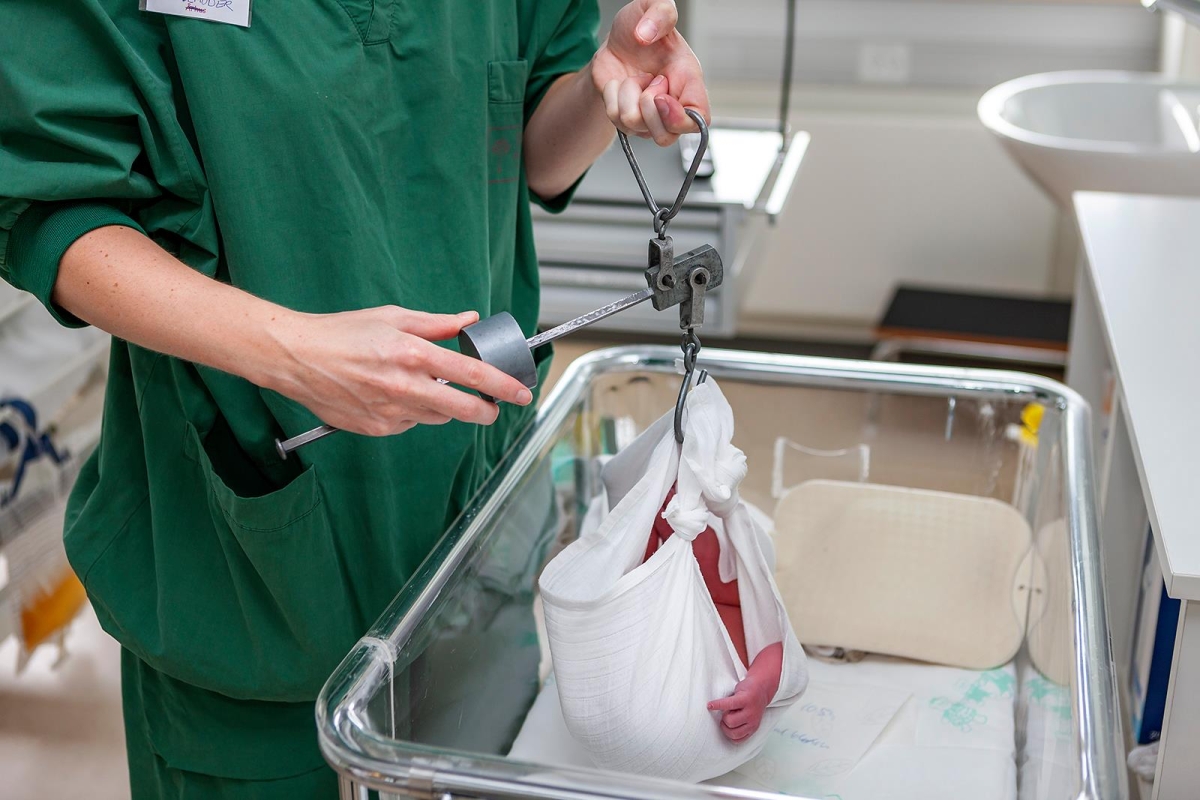Births
11. May 2023
Big drop in fertility rates

A total fertility rate of at least 2.1 children per woman is required for a population to increase, assuming no immigration or emigration occurs. This is why the 2.1 rate is known as ‘the replacement rate’.
Baby girls tend to be slightly outnumbered by baby boys, and some women of childbearing age do not live all the years to the age of 15-49.
If the total fertility rate is below 2.1, a generation of women of childbearing age becomes unable to replace itself, leading to a population decline. Unless the rate increases, the only way to prevent population decline is by increasing the number of women of childbearing age through immigration.
Despite this downward trend, the Faroese fertility rate remains the highest in Europe, as can be seen in the graph at the bottom of this article.
[px-graph-1]
The falling fertility rate can be seen by comparing the two graphs below, which show the number of women of childbearing age and the annual number of live births.
[px-graph-2]
The graphs show that while the number of women of childbearing age has been on a steady increase the past 9 years, the number of live births has not increased correspondingly. After a relatively steady annual average of 680 children from 2016 to 2021, the number dropped down to 631 last year. This is slightly below the figure for 2014, despite an increase of more than 1,000 women of childbearing age in this period.
This indicate that since the average fertility rate (child per woman) has been declining, an increasing number of women of childbearing age have been unable to offset the drop in the fertility rate.
Excess of births at an all-time low
The excess of live births over deaths reached a record low in 2022 with a figure of only 144, compared to 250-300 up to 2020. This is due to the number of live births remaining steady while 2022 saw a sharp increase in deaths. The number of deaths is expected to increase further as the elderly population continues to grow.
The excess of live births over deaths is, however, not the only determining factor in population growth. Migration also plays a key role. The Faroes have seen a big increase in immigrants in the past 9 years, which is also the main reason for the population growth over this period.
[px-graph-3]
Highest rate in Europe
Despite the falling fertility rates in the past years, the Faroes still have the highest fertility rate in Europe, according to Eurostat.
Georgia has the second-highest rate, with Turkey in third. Denmark is 12th on the list with a fertility rate of 1.72. Iceland has seen a drastic decline in fertility rates, plunging down to 21th on the list, with a rate of 1.59. Malta and Ukraine have the lowest rates, at 1.13 and 1.14, respectively.
The total fertility rate is the number of children that would be born to 1,000 women over the women’s lifetimes if:
- The women had the exact current age-specific fertility rates throughout their reproductive lives, and
- None of the women died before the age of 50.